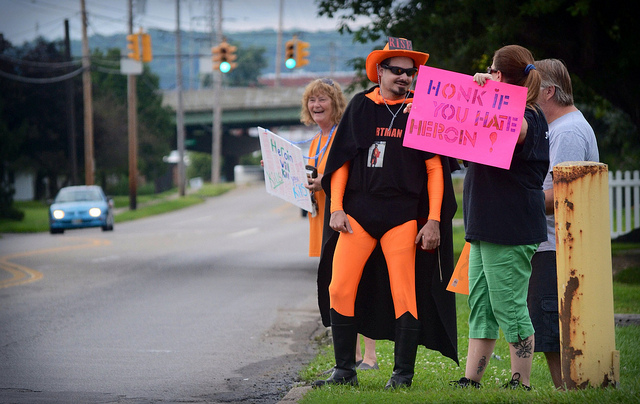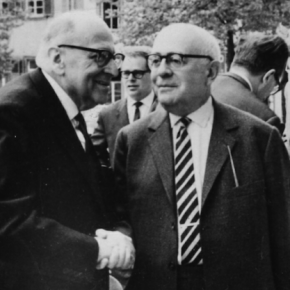In the United States right now, little has been able to compete with Donald Trump for headlines. Police killings, mostly of black men, and the protests against them have managed. So have mass shootings, particularly when they could be connected to “radical Islam.” Besides those obvious above-the-fold stories, though, perhaps the most durable subject in the news has been the nation’s epidemic of overdoses.
Every week, my news feed includes invitations to read gruesome stories about outwardly idyllic places overrun by increasingly potent prescription painkillers and the substitutes many people turn to when it becomes too hard to maintain their habit legally. An Ohio couple passes out in their car while it is still moving erratically down the highway, their toddler strapped into a car seat behind them, and the photograph of this grisly scene is shared by local law enforcement as a cautionary tale. A girl in Pennsylvania tells her school bus driver that she hasn’t been able to wake up her parents, who are later found dead, with their other three pre-school-age children in the house. A man in New Hampshire who has labored diligently to put his life back together after years of being in and out of prison hurts his leg in a workplace accident and rapidly ends up so addicted to opiates that he loses everything.
The statistics are just as alarming. The rate of overdose in many of the nation’s small towns has risen so precipitously over the past decade that the police, emergency personnel and hospitals simply can’t cope with the deluge. Even with the slight improvement in medical coverage of the working poor made possible by President Obama’s signature Affordable Healthcare Act, the costs to local government are unsustainable. Something clearly has to be done higher up, whether at the state or federal level, but no one seems to have the political capital to take decisive action.
Because the American public tends to have a short memory, one that is further abbreviated by the nature of today’s 24/7 news cycle, it is easy to forget the predecessors to this latest scourge. But they are still with us, too. Many of the people who put their lives at risk to kill their pain also abuse stimulants like methamphetamine because they are perpetually exhausted and still need to make ends meet, often working two or three low-paying jobs simultaneously. Just because the television series Breaking Bad came to end doesn’t mean that the madness it showcases did. And then there are the people who didn’t get the message that the 1980s ever ended who are still addicted to cocaine, whether in its classier powdered form or the rocks of crack that devastated the nation’s inner cities.
Unless you make a concerted effort not to see the evidence of the drug problem here in the States, you might well wonder who doesn’t confuse getting by with getting high. Unlike in the late 1960s and early 1970s, though, the pursuit of intoxication no longer carries the aura of revolution. Even marijuana is promoted primarily as an alternative to more dangerous prescription medication, rather than a means of expanding one’s horizons. The best we can apparently aspire to is managing our pain without ending up slumped in a corner somewhere with our face turning blue.
While it is true that some of the more in-depth news stories on the epidemic of overdoses have drawn attention to the fact that it is worst in precisely those “forgotten” places where political dissatisfaction is highest, not enough has been made of the connection between the return of the nation’s repressed, including overt racism, and the depression that fuels the urge to self-medicate. It can’t be an accident that Trump’s support is highest in those parts of the country, such as the Rust Belt that stretches from the old factory towns of New England through the Ohio River system into the Midwest, where the number of addicts is increasing most rapidly.
Communities there have suffered economically for decades, but now they are suffering existentially as well. Urban renewal projects and relatively inexpensive real estate are drawing knowledge workers and creatives from overpriced cities like New York and Boston, imbuing these locales with a sense of hope for the future. But it is a future that seems to exclude most of the people who live there now, particularly at the lower end of the economic spectrum. The back-to-the-land movement that is helping to fuel this migration doesn’t have much room for those who never left it.
That’s not a new development, really. I remember well what it was like to grow up near the fading industrial city of Bethlehem, Pennsylvania in the 1970s, when working farms were being refashioned as country retreats for white-collar workers and factory jobs were giving way to lower-paying service sector employment. The difference now, though, is that decades of deregulation and globalization have made it abundantly clear that the glory days are never coming back. When Trump declares his plans to “make American great again” by bringing the jobs that have fled overseas back home, even his supporters don’t believe, deep down, that he can do it. They simply appreciate the fact that he is acknowledging their plight.
It may have been a cliché, but the American Dream really did sustain generations of people, many of them immigrants, as they tried to make their way from poverty into the middle class. And many of them succeeded. That legacy, however, is now a heavy burden to their descendants, who can barely imagine living as well as their parents did, much less better. To the extent that they allow themselves to dream, it isn’t of improving their existence so much as preventing it from getting worse. For them, the pursuit of happiness has been so drained of positive content that it can now be reduced to a flight from sadness. Existential “pain management”, in effect.
Against the backdrop of such constricting aspirations, addiction starts to seem like a sensible alternative. That was the lesson we had to learn as the nation’s inner-city minority communities started to disintegrate in the 1960s. And it’s the lesson we have to learn again now, only this time in reference to the mostly white populations in the backwaters where Trump’s turn-back-the-clock message has been most ardently embraced. When you can’t imagine an attractive future for yourself, you can either retreat into the past or find a way to step, however dangerously, out of time entirely.
Photograph courtesy pf Rubbertoe. Published under a Creative Commons license.





